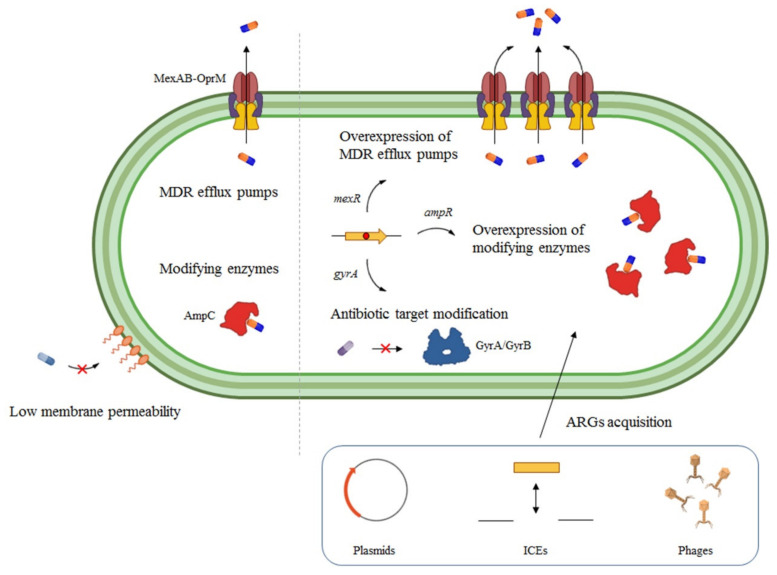Figure 1.
Schematic representation of the main elements involved in intrinsic and acquired antibiotic resistance in Pseudomonas aeruginosa. P. aeruginosa possesses a remarkable intrinsic resistance to antibiotics caused, among other factors, by the production of antibiotic-modifying enzymes (e.g., β-lactamase AmpC), low outer membrane permeability and a great amount of multidrug resistance (MDR) efflux pumps like MexAB-OprM. Antibiotic resistance level may increase by chromosomal mutations in genes encoding negative regulators of the above-described intrinsic resistance determinants, such as genetic modifications within mexR or ampR, which boost the expression of mexAB-oprM and ampC, respectively. The modification of the antibiotic target is also a frequent mechanism for acquiring antibiotic resistance in P. aeruginosa, as the increased resistance to quinolones by mutations in gyrases encoded by gyrA or gyrB. Alternatively, this bacterium is also able to acquire novel ARGs, which are located in mobile elements, such as plasmids or integrative and conjugative elements (ICEs). It has been stated that bacteriophages might also be involved in the acquisition of ARGs, but the role of these genetic elements in the spread of resistance in P. aeruginosa is not yet fully understood.

